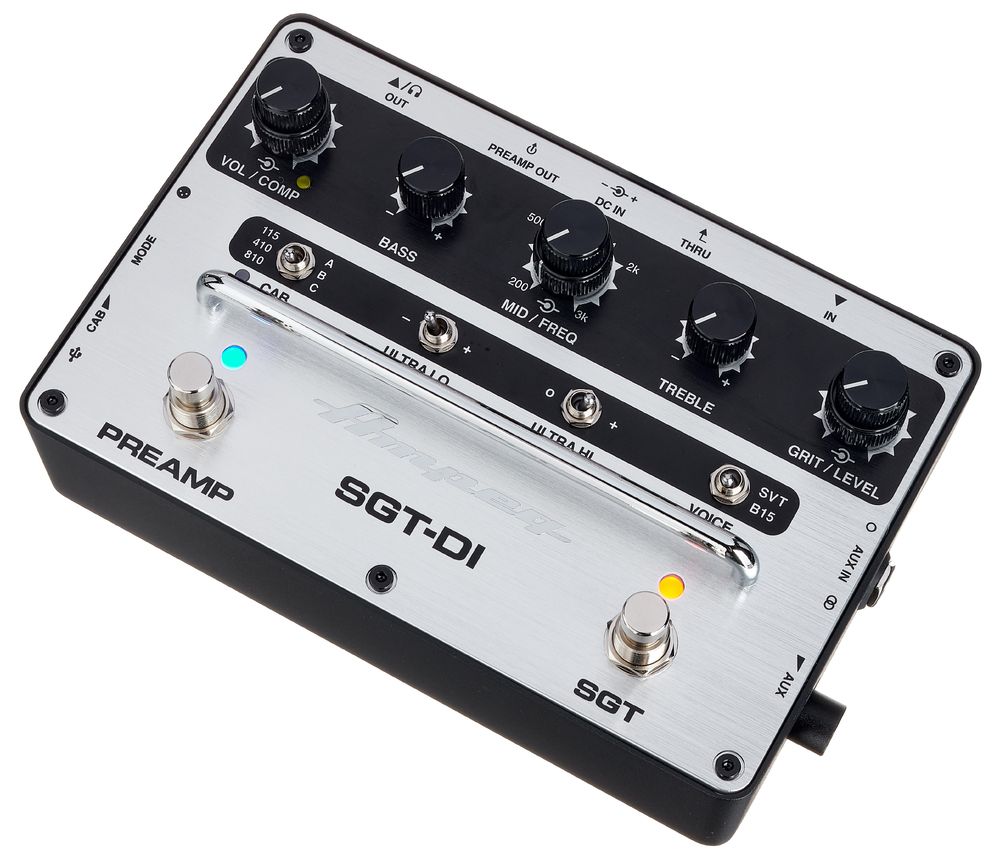4. Floorboards / Stompboxes
Just like desktop modelers, almost all currently available floorboard multi-effects generate sound using digital modeling technology. Compared to desktop units, floor effects come equipped with robust footswitches straight from the factory, making them well-prepared for rugged live performances. The extent of "foot-operability" depends on the manufacturers' model policy. Generally, less expensive units have only two footswitches, allowing users to step through presets (Up/Down) one by one. For live performances, it's wise to arrange favorite sounds in a way that can be accessed with a few foot kicks. Otherwise, switching presets might turn into a time-consuming "tap-dance." When it comes to recording, the method of preset selection plays a less crucial role. There's ample time to explore the options thoroughly.

The Ampeg SGT-DI as a typical floorboard version
Moving up in the hierarchy, we find devices that, in addition to the mandatory double footswitches, include a separate expression pedal. Expression pedals enable the nuanced control of integrated effects like Wah-Wah or Volume. Moreover, most pedals can be configured to alter selected effect parameters in real-time.
Higher-end multi-effect floorboards organize their presets in banks. Sounds can be directly selected using separate buttons (often four sounds per bank). This way, in live performances or rehearsals, you have quick and straightforward access to a variety of sounds without a stepping routine. Generally, better-equipped boards also offer more intensive editing functions and more connection options.
If you're a fan of the concept, a good bass modeling floorboard can cater to any audience. In live performances and rehearsals, these boards can be used either in front of an existing bass amp or connected to a P.A. system. More details on this in the "Front End" chapter!



